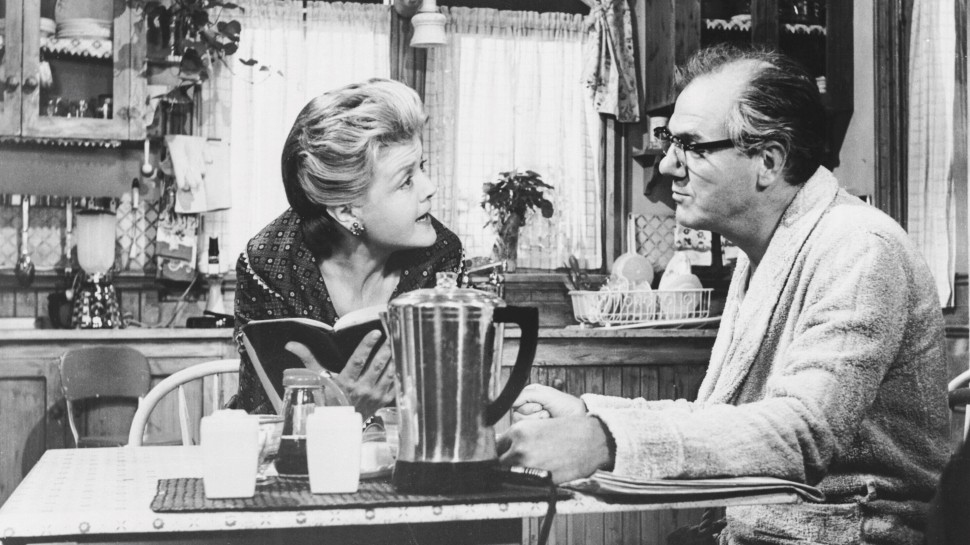
Angela Lansbury on Screen
Born to a leading Irish actress and enrolled in schools for drama at a young age, Angela Lansbury (b.1925) was singing in nightclubs at sixteen and had received two Academy Award nominations by twenty—as Ingrid Bergman’s shrewdly scheming housemaid in George Cukor’s Gaslight (1944) and in Albert Lewin’s Picture of Dorian Gray (1945) playing delicate songstress Sybil Vane. This auspicious inception led not to starring leads, but an MGM contract which conscripted her to, as she put it, “the harpies and the heavies.” With lovely, yet less standard features and a mature demeanor, she was frequently cast in supporting roles as the adulteress, the maid or the mother—and often as women several years older. By the time of her third Oscar nomination for her chilling performance in The Manchurian Candidate (1962), she was playing the mother of Laurence Harvey while only three years his senior. Nevertheless, she resisted typecasting and always brought luminous depth to her character-actor roles. Receiving continual critical notice, Lansbury eventually languished from Hollywood’s neglect and finally turned to the theater in the Sixties. Her daring and ingenious character creations and reinventions in productions like Mame, Gypsy, The King & I and Sweeney Todd won her the awards and praise her career in Hollywood always just sidestepped. Unpredictably, her third act would entail a long stay on television as the Miss Marple-esque Jessica Fletcher in the popular series Murder, She Wrote, centered around the intelligence and adventurousness of an older, unassuming woman—an achievement still remarkable by the standards of today’s television landscape. Lansbury finally received the Oscar she long deserved in 2013 for Lifetime Achievement and was bestowed the title of Dame by Queen Elizabeth II in honor of her seventy-year career as well as her humanitarian work.
The Harvard Film Archive is thrilled to welcome Angela Lansbury to discuss her uniquely challenging, ultimately successful journey through stage and screen—which she continues to vibrantly pursue to this day. – Brittany Gravely





